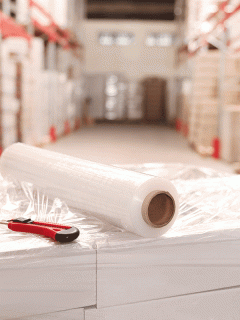Do the math: How much does it cost to transport your goods over a year? Indisputable: The impact that the right (or wrong!) transport strategy has on the costs of any business is serious. This obviously affects both cash flow and the profitability of your individual shipments. Logistics costs influence both the results and the perceived quality of the company.
46 Billion Dollars Savings Potential According to Forbes.
46 billion dollars!
That’s the amount that can be saved globally each year by eliminating or reducing gaps in shipping. This is shown in a study by Forbes Insight for DS Smith. An enormous amount. And this doesn’t even take into account the impact on the environment: Optimising shipping is also a great opportunity to save the environment by avoiding unnecessary packaging – priceless!
So potentially, your transport costs can be drastically reduced. At the same time, it is essential to prevent the company’s image from being tarnished by savings on delivery to customers.
In this article, we tell you four ways to reduce logistics costs that Stéphane Roussel, transport specialist at RAJA, revealed to us in conversation.
Avoid hollow space
Choose your provider … and regularly test competitors as well
Create synergies with subsidiaries or other companies
Set up a Transport Management System (TMS)
Point 1: Avoid hollow space
This logistical optimisation can both achieve significant savings and reduce CO2 emissions. If you pursue this point with vigour, it will -besides the mentioned savings- also have a real impact on the company’s image!
The small 2-point plan for optimal space utilisation:
- Packaging: Whether envelopes, boxes or pallets, any unused space means wasted money (practical tip: variable height boxes)
- Transport vehicles: Whether truck, ship or plane – optimise your transport plan for optimal utilisation
This is what Stéphane Roussel, transport specialist at RAJA, has to say:
Point 2: Choose your provider … and let it compete against the competition on a regular basis
A well-developed transport plan cannot do without this second tip: Make your choice of carrier with care
When choosing the service provider to transport your goods, people often think about optimising their logistics costs. However, price should not be the only criterion for the choice.
Here is a short list of things you need to consider:
- The reputation of the company and the experiences you have had before or that trustworthy people have had.
- The quality of service in the area relevant to you. A haulier can indeed be very good in one sector and not in another.
- His transparency, his quality of information for you. A forwarder may encounter many problems in daily deliveries, but it is essential that he informs you about them in the following ways
This is what Stéphane Roussel, Transport Specialist at RAJA, has to say:
Test the provider
Don’t hesitate to test your transport provider for a month or two. Set criteria against which they will be tested: The speed of problem solving, the transparency regarding these problems, the commitment to meet deadlines … List these criteria and carry out unannounced spot checks.
Points to negotiate with your transporter
Remember that it is also possible to negotiate many aspects with carriers. For example, above a certain delivery volume, you can negotiate cost reduction percentages at the end of the year. Again, it is your responsibility to find the points on which you can negotiate your budget without compromising the quality of the delivery.
Says Stéphane Roussel, Transport Specialist at RAJA:
Point 3: Create synergies with subsidiaries or other companies
Your company is not the only one that wants to optimise its transport costs. And here lies one of the “big levers” to optimise most logistics budgets. You can visit different types of actors to talk about possible synergies and consequently the reduction of transport costs:
- Subsidiaries of your company if it is a large group
- Other companies that have the same catchment area as you.
When you make your transport plan, you will often find that some transport lines are in deficit. Find the companies on the same lines and bundle your transports. The larger volume of orders puts you in a much better position when negotiating prices with the transport service provider. With this technique, companies can therefore compensate for losses due to containers and pallets that are not completely filled and reduce costs considerably.
Stéphane Roussel, transport specialist at RAJA, comments:
Point 4: Set up a Transport Management System (TMS)
No doubt you have heard of it if you are interested in reducing your transport logistics costs: The TMS, Transport Management System, as a possible solution. Thanks to a very fine analysis software, the TMS allows to find the most suitable transport schemes for the company. As a rule, a TMS takes the following into account:
- The best price compared to the best flow type;
- The different tariffs of the carriers, depending on the transport zone;
- The best management of multisites (with joint delivery via the different subsidiaries on a single container).
All these comparisons are traditionally done “by hand” by your logistics department! However, in a large company with large transport flows, it is necessary to devote a lot of energy and personnel to this.
After fine-tuning, a TMS generates optimised transport schemes almost automatically
This is what Stéphane Roussel, transport specialist at RAJA, has to say:
The essentials in 4 points
In addition to technical support, reducing transport costs depends primarily on your choice of carrier and your ability to build a relationship of trust to continuously improve performance.A person dedicated to this activity is therefore necessary as soon as the in-house logistical activity reaches a critical volume (financial and time/personnel).A good freight forwarder can and will think and collaborate so that you can make truck fill rates profitable.Finally, with the help of packaging experts, you need to consider how to make the lightest and most compact packages possible to reduce the transport costs per unit – so that you can ship more orders per vehicle.


















